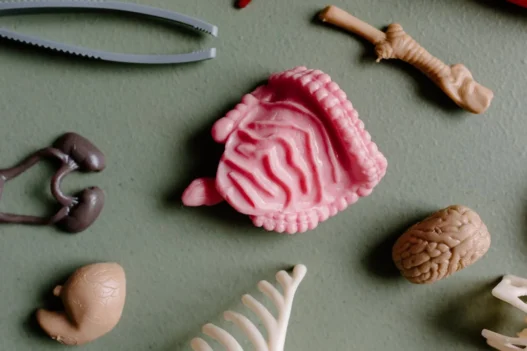0SSPX4Z is a procedure where the right toe phalangeal joint is repositioned with the help of an internal fixation device through an external approach. This surgical technique is used to correct misalignment or instability in the joint.
Table of Contents:
- 🔎 Clinical Indication
- 📋 Preparation
- 📖 Methodology
- 🩹 Recovery
- 🚨 Complexity & Risk
- 🔀 Similar Procedures
🔎 Clinical Indication
The surgical procedure 0SSPX4Z, also known as Reposition Right Toe Phalangeal Joint with Internal Fixation Device, External Approach, may be performed to correct a dislocated or misaligned phalangeal joint in the toe. This procedure is typically recommended when non-invasive treatments, such as physical therapy or medications, have not been effective in restoring normal function and alignment to the joint.
During the procedure, an internal fixation device, such as pins, screws, or plates, may be used to stabilize the joint and hold it in the correct position while it heals. The external approach refers to the incision made on the outside of the toe to access the joint and perform the necessary realignment. Overall, this procedure aims to improve the function and mobility of the toe while reducing pain and discomfort associated with the joint misalignment.
📋 Preparation
Before undergoing the procedure 0SSPX4Z (Reposition Right Toe Phalangeal Joint with Internal Fixation Device, External Approach), the patient will typically meet with their surgeon to discuss the procedure and any potential risks involved. Preoperative testing such as bloodwork and imaging may be required to ensure the patient is healthy enough for surgery. The patient may also be instructed to refrain from eating or drinking anything before the procedure.
In preparation for the surgery, the patient may need to stop taking certain medications that could interfere with the procedure or their recovery. The patient may also be instructed to shower or bathe with a special soap the night before or the morning of the surgery to reduce the risk of infection. The surgeon may also provide the patient with specific instructions on what to wear on the day of the surgery.
On the day of the surgery, the patient will be asked to arrive at the hospital or surgical center at a specific time. The patient will be taken to a preoperative area where they will change into a hospital gown. An IV line may be started to administer fluids and medications during the procedure. The patient will then be taken to the operating room where the surgery will take place.
📖 Methodology
During an 0SSPX4Z procedure, surgeons reposition the right toe phalangeal joint using an internal fixation device. This device helps stabilize the joint and allows for proper healing.
The procedure is done through an external approach, meaning the surgery is performed from outside of the body. This approach gives surgeons better visibility and access to the toe joint, ensuring accurate placement of the fixation device.
🩹 Recovery
After undergoing a reposition of the right toe phalangeal joint with an internal fixation device, the patient will be monitored closely for any signs of infection or complications. Physical therapy may be recommended to help with rehabilitation and to improve range of motion in the affected toe.
The internal fixation device will hold the bones in place as they heal, allowing for proper alignment and stability during the recovery process. Follow-up appointments with the surgeon will be necessary to assess the progress of healing and to determine when weight-bearing activities can be resumed.
Overall, recovery after a reposition of the right toe phalangeal joint with an internal fixation device involves a combination of monitoring, physical therapy, and follow-up care to ensure a successful outcome and optimal function of the toe.
🚨 Complexity & Risk
Performing 0SSPX4Z involves repositioning the right toe phalangeal joint using an internal fixation device through an external approach. This procedure is complex due to the intricacies involved in realigning and stabilizing the toe joint.
Patients undergoing 0SSPX4Z face potential risks such as infection, nerve damage, and failure of the internal fixation device. These complications can lead to prolonged recovery time and possible revision surgeries to address any issues that may arise.
🔀 Similar Procedures
Another medical procedure similar to repositioning a right toe phalangeal joint with an internal fixation device through an external approach is surgical repair of a ruptured Achilles tendon. This procedure involves reattaching the torn tendon in order to restore function and stability to the ankle.
Both procedures require a surgical approach to address a specific musculoskeletal issue that may affect mobility and quality of life. The use of internal fixation devices may be necessary in both cases to ensure proper alignment and healing of the affected area.

